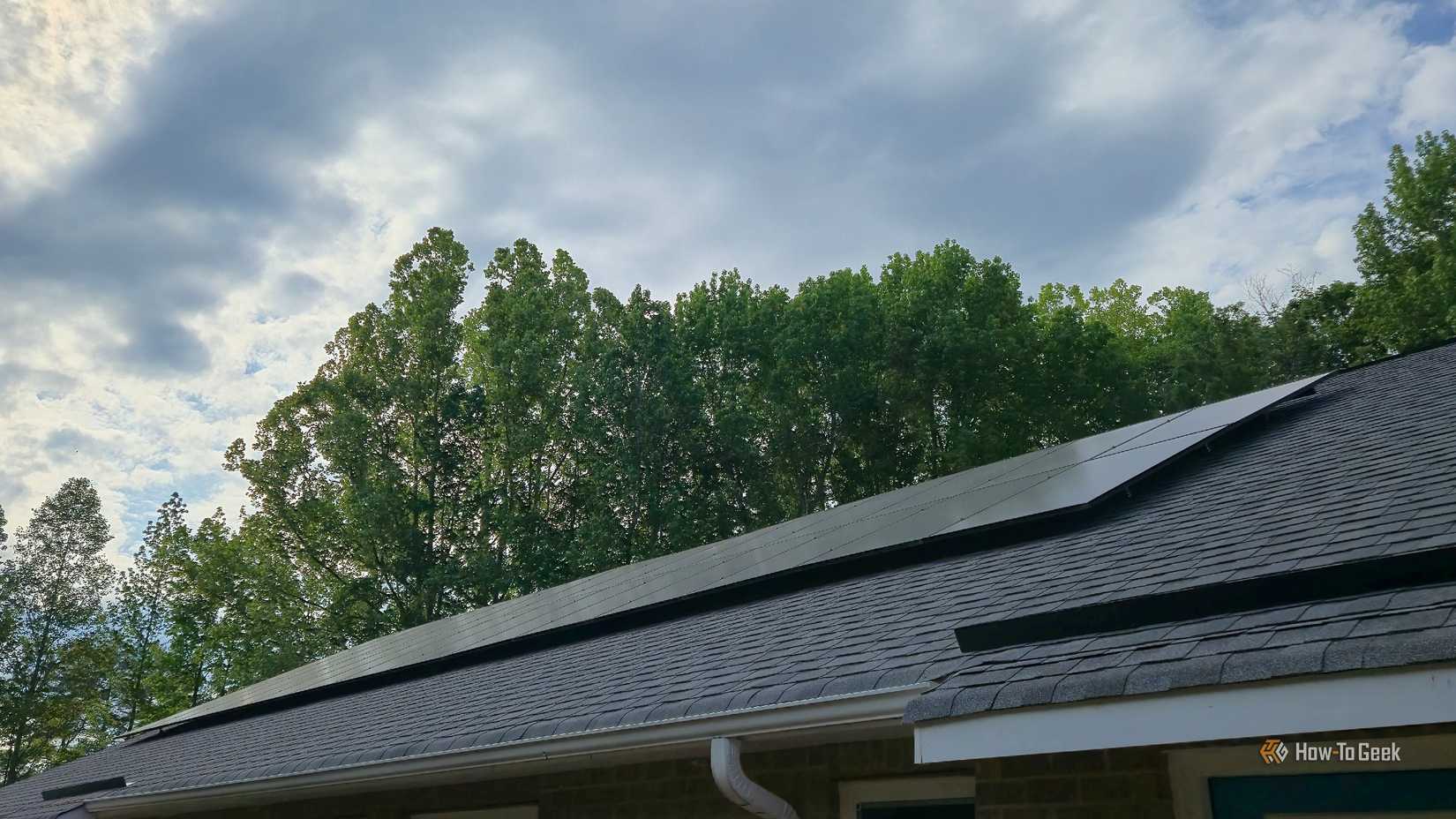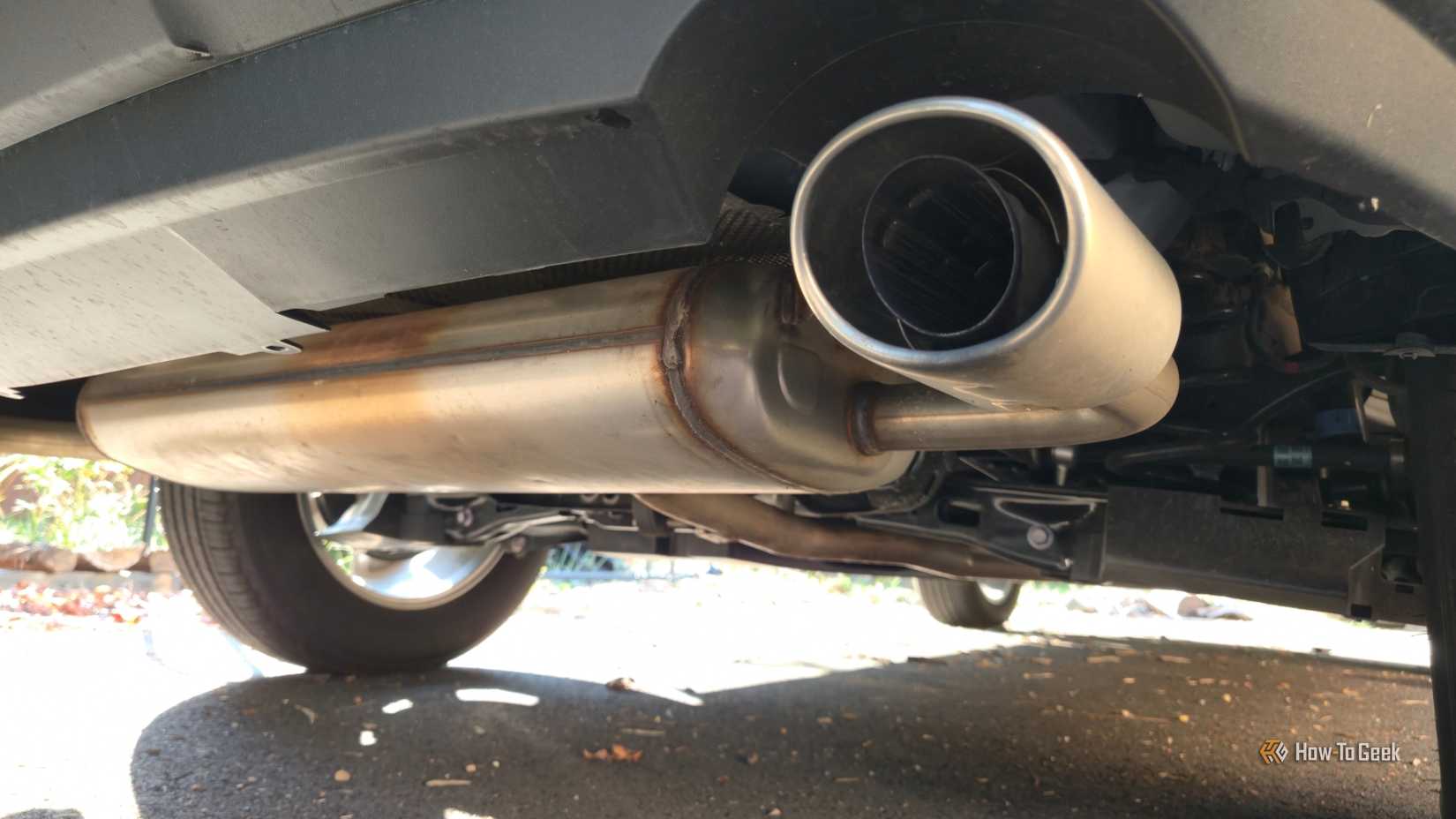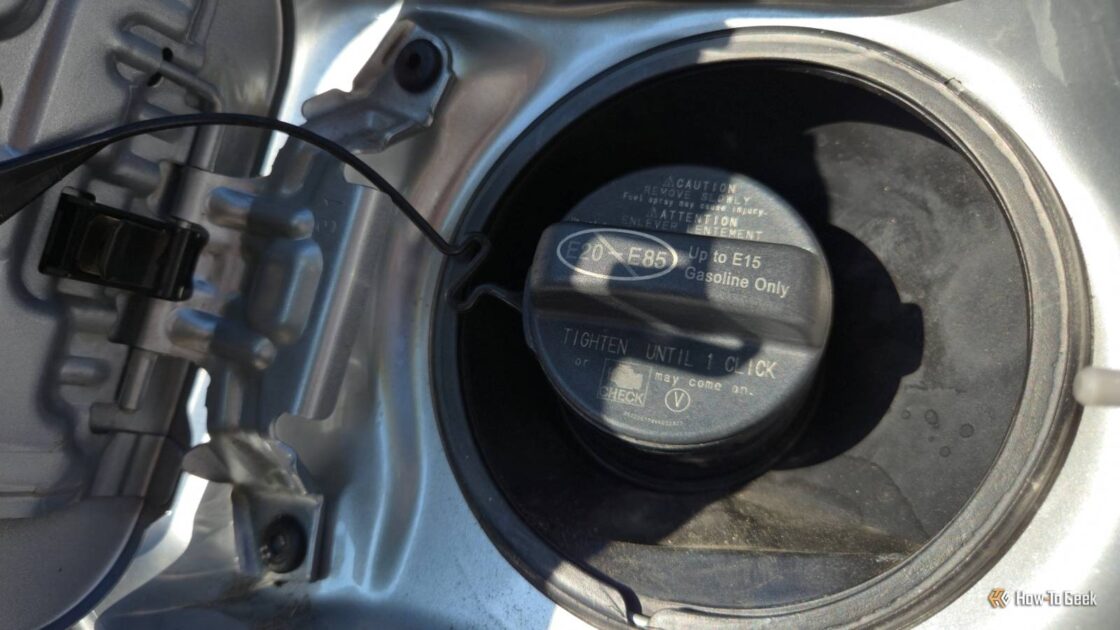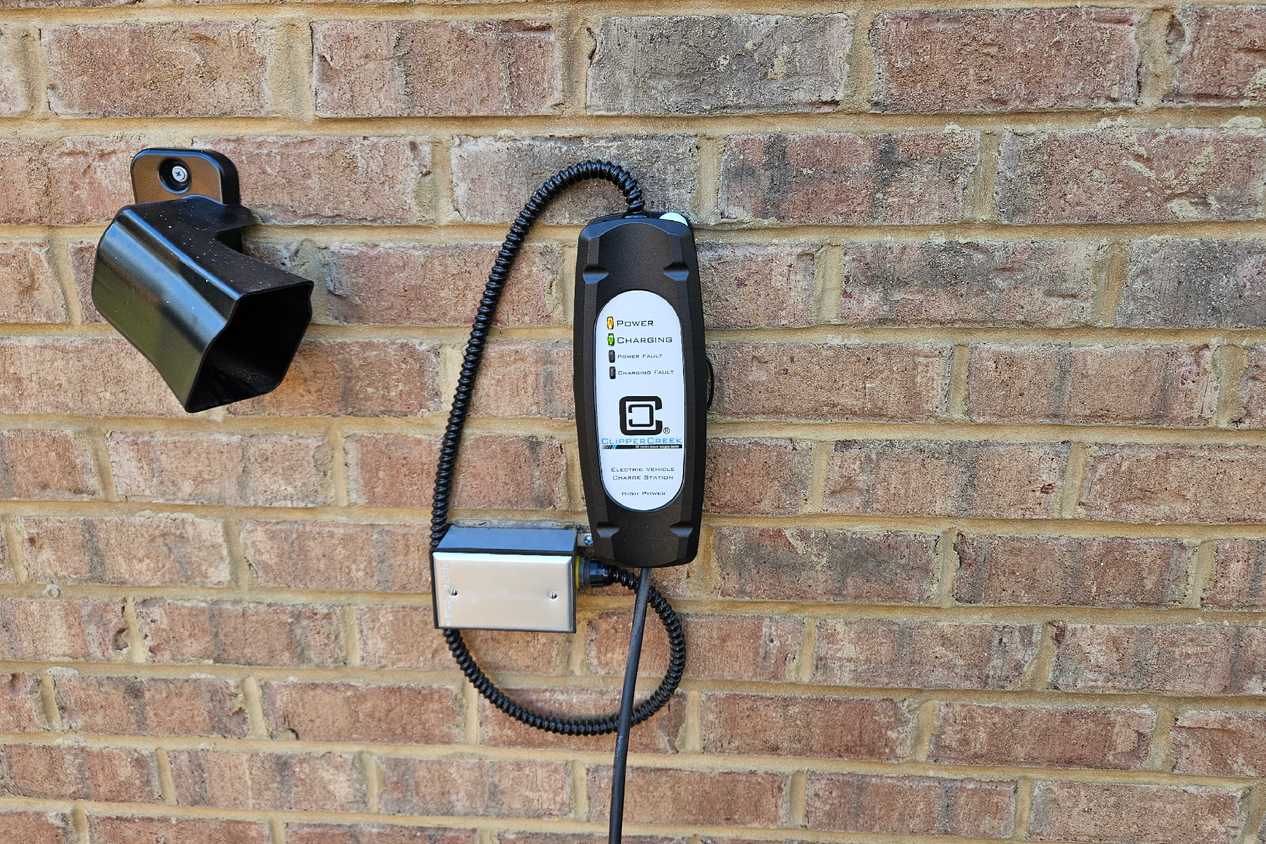A lot of people are afraid, intimidated, or outright angered by the thought of having to switch to an electric car. That's valid—the way these cars function is quite different. But once you've reconfigured your life around EVs, the frustrations of switching back to a gas-powered car are greater than you might think.
Gas Is Expensive, and We Can't Make Our Own
My wife currently drives over 150 miles per day. She's attending grad school quite a ways away, and we made that decision knowing we didn't have to budget the extra hundreds of dollars in gas that would be needed each month.
My wife does this drive for free, because not only is the cost of electricity generally lower than the cost of gas, but this is a type of energy we can produce at home. We've put enough solar panels on our roof to supply most of the energy for both our house and our two cars. Now that we've lived in our home for over a year, we're in the process of adding enough panels to close the remaining gap, so that we can stop thinking about paying for energy or fuel entirely.

With that upfront cost behind us and the ongoing cost of energy and fuel now free, why would I want to go back to budgeting hundreds of dollars in gas to continue driving to the exact same places? And unlike with electricity, there is no option to ever produce our own and stop paying—at least, not yet. Switching to any gas car would make my life more expensive.
Gas Reintroduces Daily Range Anxiety
Range is the first question that's comes up whenever most people inquire about an EV. They want to know if it can drive far enough to go all the places they want to go. But range anxiety isn't exclusive to EVs. Rather, the nature of that anxiety is different, and most drivers are so acclimated to the range limitations of gas cars that they either don't experience the anxiety or don't register it as such.
I drive a Kia Niro EV. My car can drive over 200 miles per day without my having to think about stopping to refuel. If I get back home with under 150 miles of range left, I plug it in. The next time I leave the house, I'm right back up to 200-250 miles of range, depending on the weather and what percentage I set my car to charge to. I only need to think about publicly charging my car a few times a year, typically when I drive somewhere out of state.
By contrast, the range in my gas-powered rental car drops every day. And the 160 remaining miles with half a tank of gas you see here is quite a bit less than I'm used to starting my day with.

That number will only gets lower and lower until I eventually have to go somewhere and do something about it. As the number drops, I need to start planning whether this is the trip where I will need to go out of my way to refuel. And compared to where I typically charge my car, even stopping at a gas station that's along the road I'm already driving on is a bigger disruption than I'm accustomed to.
Will I end up stranded? No. There are more than enough gas stations to prevent that. But I was rarely concerned about getting stranded even before my Kia Niro gained access to the Tesla Supercharger network, and with Walmart adding chargers to thousands of its stores (see this interview for those details), the remaining gaps will continue to shrink.
We Can No Longer Refuel at Home
For homeowners like me, living with an electric car means I don't think about public refueling all that much. This rental car changes that.
When I get home, it takes no more than ten seconds to plug in my electric car. I don't need to stand there and hold the plug. I don't need to be standing there when it stops charging in order to quickly unplug it, like at a gas station. I plug it in, and then I immediately stop thinking about it.
Charging my car is as familiar as charging my phone and, frankly, I find it much less of a bother than charging up a smartwatch. As someone living in a detached single family home in a rural area, this is how I do almost all of my charging.
Engines Are Loud and Vibrate the Car
One nice thing about EVs unrelated to fuel? They're silent. Also, they don't shake or rattle or vibrate. When you turn on an electric car, the motor doesn't give any indication that it's on until you start to accelerate.
As soon as I turned on my rental car, I was struck by how loud it was. I often like to drive with the stereo off, listening instead to the sound of the wind going by and road noise. In our rental, the primary sound is engine. I'm surprised by how much it revs from the slightest touches and how often it needs to shift gears. For that matter, I don’t miss shifting gears either. I find smooth acceleration and instant torque to make driving significantly more fun—and that's without having experienced one of the more exhilarating electric cars. I also don't particularly enjoy feeling myself vibrate while I wait at a traffic light.
Is the noise and vibration of the engine an objectively bad thing? Not necessarily—but both aspects are now optional byproducts of how some cars work, and rarely, in any product, does listening to it make additional noise and rattle come off as an improvement.
Idling Is No Longer Harmless
I spend more time waiting around in my car than I'd like. Always have, long before I needed to fast-charge my EV for over half an hour, and before I was even old enough to drive. Now as a parent, in addition to waiting for a family member to come out of the store, I now find myself in the pick-up line until the kids come out of school or waiting outside while either child is practicing piano or dance.
One of my favorite things about EVs is that sitting around in the car while the AC runs is virtually harmless. There's no pollution pumping into the air, and my charge might drop a single percentage point after idling for an hour. There's no concern about the cost.
With this rental car, I am once again rolling the windows down and balancing how much gas I can burn in good conscience to avoid baking. Were it winter time, I'd be trying not to freeze.
I'm Desensitized to the Smell
I've never been a fan of the smell of gas or diesel. I strongly disliked going to gas stations even when it was the only option (and where I'm from, you either drive a car or you have someone else drive it for you—biking and walking are not viable options).

It wasn't until I switched to an EV that I experienced months at a time without being within a few feet of a combustion engine, and it was that time and distance that re-sensitized me to the smell of the fumes. Sometimes I feel slightly nauseous after a few minutes of driving an ICE car after a long break. It's not pleasant.
They Feel So Slow
Many tech reviewers and car enthusiasts will compare the fastest EVs to the fastest gas-powered cars. I've never been interested in such comparisons, since I've never owned either one. I drove non-thrilling vehicles like the Nissan Sentra and the Toyota Rav4 before transitioning to electric hatchbacks and SUVs.
Even a relatively slow EV feels like a speedy and peppy ride. My first electric car was a 2013 Nissan Leaf, and even though it had barely any range, it was a fun car to zip around local roads with. My Kia Niro EV is the fastest and most powerful version of the Niro, with a 0-60 speed of 6.2 seconds in the electric model compared to 8.6 seconds in the hybrid one. Plus in an EV, there's the smooth acceleration that comes from a lack of shifting gears.
This isn't just a matter of thrill and enjoyment. I live on a busy road where the cars go by at over 50 miles an hour. During the busy morning and evening commute hours, how fast my car can accelerate determines how long I'm waiting in my driveway waiting for an opening in order to make my turn. In my solar-powered (or solar-offset) Niro EV, a fast start is a non-issue. In this Rav4, it's a nervous exercise in burning more fuel and hoping I don't cause the car behind me to hit the brakes. I better understand now why my neighbors complain about the growing traffic.
Changing from a technology we've built our life around isn't easy. In my case, even if all public EV charging infrastructure were to go away, I'd likely still keep my electric car. I doubt I'd even want to take back on the maintenance costs of the combustion engine in a plug-in hybrid. Transitioning back to gas has enough downsides, for me, that I would just rent a gas car for the occasional road trip and go back to my life of free, clean, and quiet driving for the rest of the year.
And if megawatt fast-charging takes off by the time I'm ready for a new car, finding an upside to gas will be even harder.


















































































































